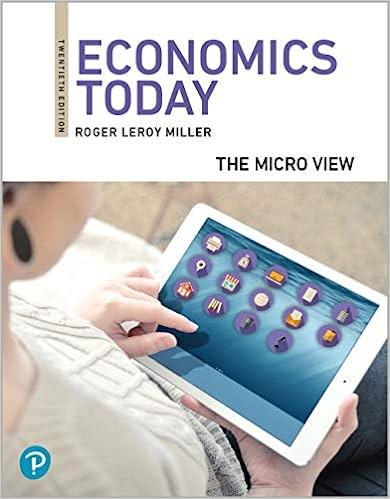In the 1990s, Dana Mead, the chief executive officer of Tenneco, Inc., quipped, NAIRU is to economics
Question:
In the 1990s, Dana Mead, the chief executive officer of Tenneco, Inc., quipped, “NAIRU is to economics what a Nehru jacket is to fashion: outdated.” The relationship between the rate of inflation and the unemployment rate for the last few decades appears to provide a rationale for this view. Through most of the 1990 and 2010s, reductions in the unemployment rate were accompanied by little change in the rate of inflation.
For the Federal Reserve, the changing nature of the relationship poses a problem. In the 2012, the unemployment rate and inflation rate both declined at the same time. The Federal Reserve’s inflation-forecasting models indicated that inflation was “too low” relative to the actual unemployment rates—or alternatively that the unemployment rate was “too low” relative to observed rates of inflation.
Economists developed two possible explanations. The first focuses on the increase in competition following widespread deregulation of many industries, reduced barriers to international trade, and the growth of Internet commerce. This hypothesis proposes that most industries found that the demand for their products was more price sensitive than it had been before. Increased competition tends to restrain inflation at any given unemployment rate. In addition, increased competition will reduce the natural unemployment rate. Both of these effects are consistent with the declines in both the inflation rates and the unemployment rates during most of the 1990s and 2000s.
The other theory focuses on the age distribution of the population. A large fraction of the current population consists of the Baby Boomer generation born during the 1940s and 1950s. These people were entering the labor force in the 1960s and 1970s. Unemployment rates are always higher for teenagers than for any other age group. Fewer people were born in the 1970s and early 1980s. These people reached working age in the late 1980s and early 1990s. The 1960s and 1970s had a large number of teenagers, and many of them were unemployed. This factor pushed the unemployment rate up in those years. As the rate of population growth fell, fewer teens were in the labor force, and the unemployment rate fell.
Can the unemployment rate ever be “too low?”
Step by Step Answer:






